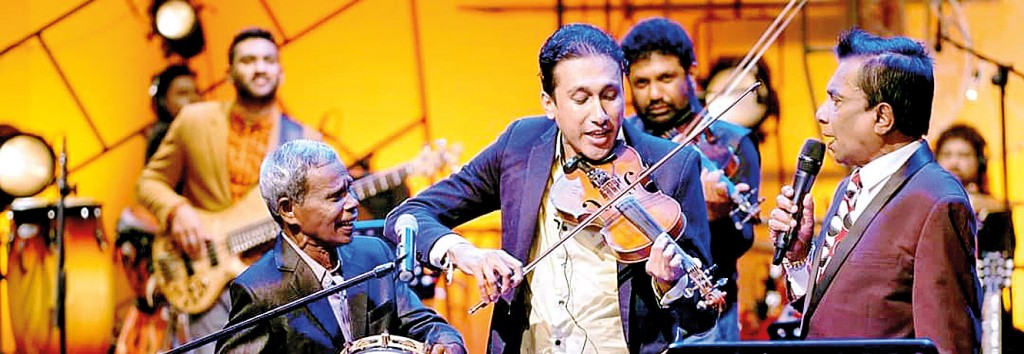In search of Baila
View(s):
Rodney, Susantha Kariyakarawana and Dinesh
‘Baila Saade’ on Rupavahini
New TV programme an entertaining insight into popular singing style introduced by Portuguese
‘Baila Saade’, a novel musical programme, an entertaining study on Sri Lanka’s popular musical style ‘Baila’ will be telecast every Sunday starting from today, October 25 from 11am to 12 noon on National Rupavahini.
Directed by Sumith Disanayaka, the programme is scripted by Lal Ananda and music direction is by award winning musician Dinesh Subasinghe with Tone Poem Orchestra. The programme is presented by actor, singer and announcer Rodney Warnakula.
Traditional Baila singers like Esiri Fernando and Modara Dias will join the programme while other popular singers like Saman de Silva, Dhanapala Udawatta, Susil Fernando, Jude Soyza, the son of Claude Soyza and many others vocalists are to join the programme.
“In ‘ Baila Saade’ we are trying to cover all the music styles comes under Baila and this will be an academically important programmes as well” said Dinesh Subasinghe describing about the new musical programme and its background. According to Dinesh Sri Lankan Baila was influenced by Goan and Konkani music styles in India. Later singing styles of Africans who were brought here by Portuguese and the music styles of Portuguese themselves and Spanish music have been influenced to make this music style unique to Sri Lanka.

“It was further changed after mixing with our own indigenous musical styles that could be found in Sokari, Nadagam and Virudu. Originally Baila is the singing style and kaffirhina is the dancing style”.
“Traditionally there are main16 Baila rhythms and they have been divided in to 42. And there are about nine rhythms introduced by police officer turned singer Wally Bastiansz who is considered as the father of Sri Lankan Baila. There are about four rhythms added by the Kaffirs community in Puttlam area,” said Dinesh who has extensively studied music both here and abroad.
“To present the original music of Baila, certain specific musical instruments have been used. String instruments like violin, classical guitars, mandolin, banjo and various tambourines are used to produce original Baila music style,” he said adding that the music lovers would also be able to experience the music of different decades like 1960s, 70s and 80s and then the modern music.
“We are planning to design this programme to suit the academic standards of higher education institutes like universities.” “This is a musical style that is nearly 500 years old and over the years it has been developed mixing and blending with musical styles and genres of different countries,” Dinesh said explaining the history of Baila in Sri Lanka.
“The subject matters that Baila dealt were not limited to love but went beyond. Baila has been used to discuss different social revolutions, social and political issues, and even taboo issues that are hardly discussed in public fora. So Baila deserves to get the place place of a classically important subject.
I think it is high time that a serious study is being done on the origin of Baila, its spread, its usage and its present situation and added to the university curricular of musical studies. This is one of the most important musical styles that deserve to get better place,” he stressed.


